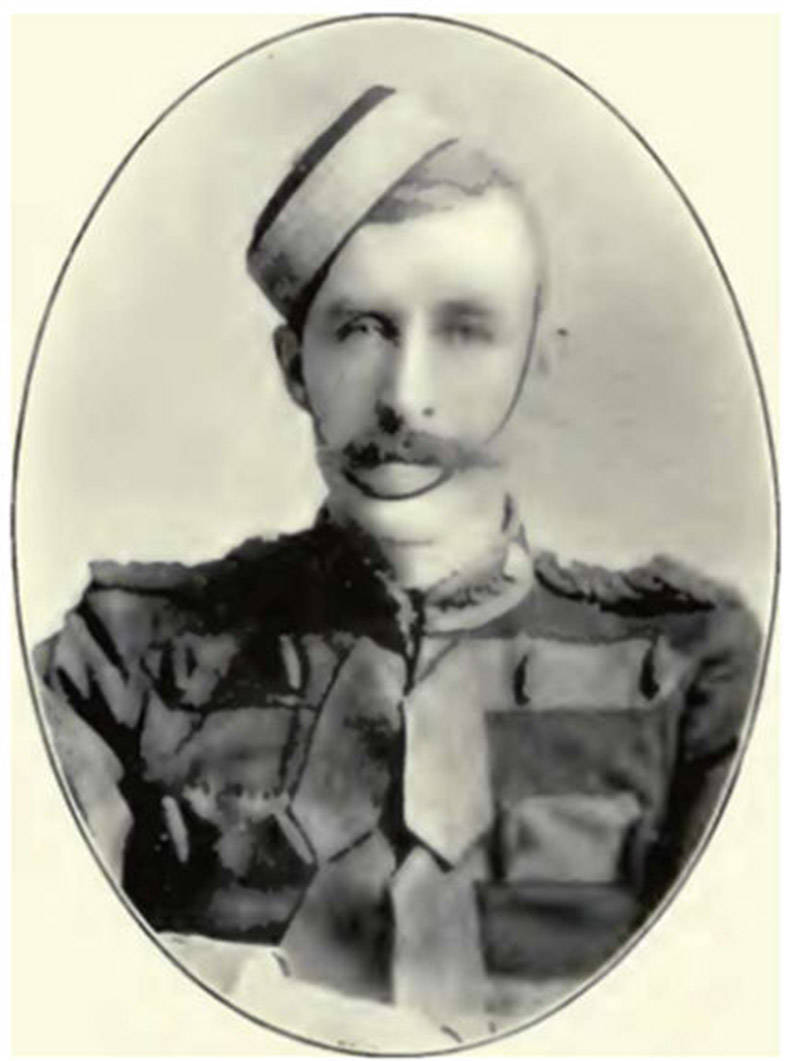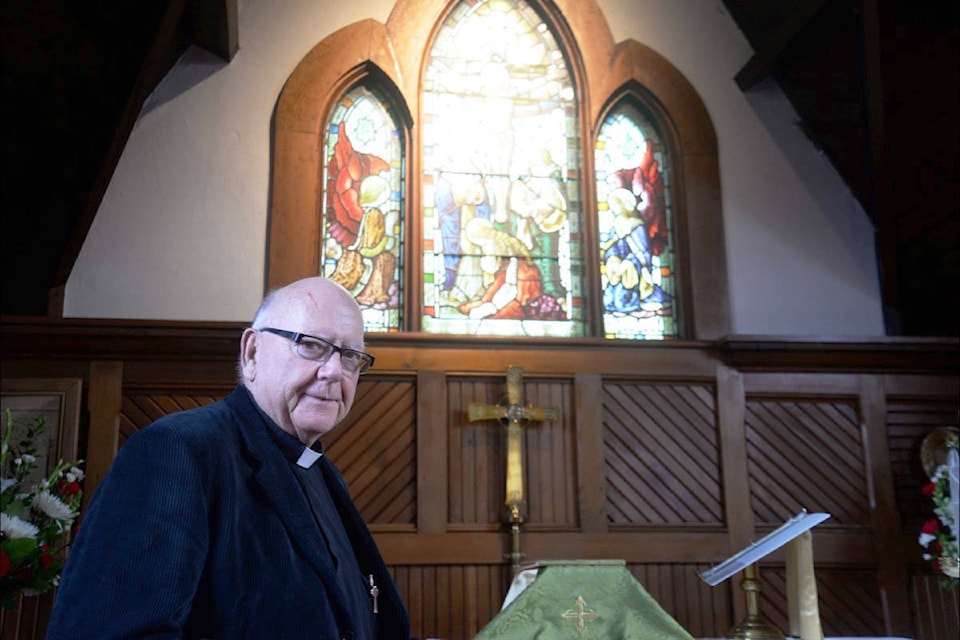A man buried in Agassiz 90 years ago will finally get a gravestone thanks to the work of a local historian and Anglican vicar.
It all started when someone started asking questions about the intricate stained glass window in the All Saints Anglican Church.
Beneath the delicate sheets of coloured glass illuminating the crucifixion of Christ, the words “In loving memory of Elizabeth Sage White-Fraser” can be read.
Records revealed that Elizabeth had been a talented opera singer of the parish who died of sudden heart failure in 1908. The Anglican church had raised the money and put in the stained glass window as a memorial to her.
But as they tend to do, one story quickly led to another.
Elizabeth’s husband, Lieut. Montague Henry-White, had spent a great deal of money buying a monument for his wife’s final resting place. But when White-Fraser himself passed away years later, the money from his estate barely covered the cost to bury him. He died a pauper and has been in an unmarked grave next to his beloved wife “Elsie” in the Kent Municipal Cemetery for 90 years.
But dedicated Agassiz historian and genealogist Linda Shephard has been fighting to have the unmarked burial spot of White-Fraser recognized with a gravestone.
After working with Rev. David Price of the All Saints Parish, the RCMP Veterans’ Society has committed to putting a headstone into the “Old Agassiz Cemetery” for the long-dead veteran and former police officer.
The cemetery could have hundreds of unmarked graves, according to Shephard, some of them even covered by steps built into the hill leading there. When she first started looking into Agassiz history, Shephard became interested in the leaf- and debris-covered secrets the old cemetery might hold.
“I realized there are very few headstones in the entire cemetery,” she says. “There are 279 burials there that we know of, but there are burials that we don’t know of too.”
Shephard says that when the cemetery was created in 1900, there was very little effort put into record-keeping.
“It hasn’t been closely tended to, there’s a lot of mysteries to it,” she says.
Shephard was drawn to the ornate fencing around Elizabeth’s grave and, after digging through some records, she discovered White-Fraser himself was buried next to her. Shephard felt a special connection to White-Fraser and became committed to recognizing his life.
Born in India to British parents, White-Fraser came to Canada in 1883 to work for a syndicate managing land for the Canadian Pacific Railway. He was commissioned by the North West Mounted Police (NWMP) in 1884 and was tasked with separating settlers and First Nations people. White-Fraser served under General Middleton during the Northwest Rebellion and was the orderly officer at the hanging of Louis Riel.
After 13 years of service, moving across the prairies with Elsie, White-Fraser requested early retirement from the NWMP at age 44. He was a given a retirement allowance of $250 a year, “a victim of the unfair and inadequate pension at the time,” says Shephard.
Years after his retirement, the NWMP would become the Royal North West Mounted Police and, eventually, the RCMP as we know it today.
White-Fraser fought in the 1901 Boer War, and afterwards was “never the same,” according to Shephard, adding he was unable to find steady work and likely suffered from Post-Traumatic Stress Disorder (PTSD).
For his Boer War service, White-Fraser received a grant of free homestead land, likely in Agassiz. He was appointed a province-wide Justice of the Peace.
His deteriorating mental health led him to a commit a violent crime, stabbing a man in his home and consequently spending a period of time committed to an asylum.
Rev. David Price is a trained PTSD therapist and worked as a prison chaplain for 20 years. He says White-Fraser had compounded trauma from years in the NWMP and fighting in the Boer War.
“It’s a gradual illness that grows and then emerges because you have so much trauma that’s been unresolved,” he says. “Then it starts to manifest itself in a lot of different ways: depression, drug addiction, alcoholism, anger, burnout, and even sometimes suicide.”
There’s stigma around mental health and PTSD today, but in White-Fraser’s time, it was significantly worse. Soldiers with trauma were referred to as being “gun-shy” and considered emotionally weak. Most doctors assumed trauma came from physical injuries, not psychological ones.
“Back in his time, it was far more intense,” says Price. “We had the same human condition … but with his wife dying and his own career…. it all would have compounded and led him to do things like stabbing somebody.”
Elsie’s death in 1908 further impacted White-Fraser’s mental state. He spent a huge amount of his dwindling money to buy a monument and ornate metal fence for his wife’s resting place.
“His world fell apart in 1908,” says Price. “He really never recovered.”
Records indicate that after his wife’s death, White-Fraser lived alone in a small shack in Burnaby. He died a few days shy of his 74th birthday.
For Shephard, White-Fraser’s story hits close to home.
A close family member suffered from PTSD and lived in similar conditions to White-Fraser.
“I kind of felt a personal connection to that,” she says. “I really took a close interest.”
Shephard’s research had revealed an Agassiz man who died with very little to his name.
“[He] died a pauper and there wasn’t a single penny left in his estate after bills were paid to afford him even a modest headstone to mark his final resting place,” she says. “He’s a well-known individual of his time. I felt that he really didn’t get what he deserved.”
Price says getting a gravestone for White-Fraser represents the acknowledgement of history.
“We don’t want him to be the Mountie who lost his name; we want him to be recognized for who he was in his own time, and for who he was in Agassiz,” Price says. “We have to respect and understand our history or else we repeat it again in our present and future.”

